I hate to be the person who says that government should be smaller except when it comes to spending on his/her/zir/their personal passion. On the other hand, research is an area where Econ 101 says that companies will inevitably underinvest and, therefore, society will underinvest unless government steps in. Any fundamental breakthrough is going to be copied by competitors, which means that the developer of a breakthrough is not going to get the full benefit of the investment.
Much of aviation today is based on research done by NACA, the predecessor to NASA. For example, the airfoil on a typical wing will be a NACA-developed shape. NASA is still in the business of helping the aviation industry, albeit as a pimple on the butt of the womanned space program, as measured by funding.
NASA had its own pavilion at EAA AirVenture. The front neatly illustrates America’s progression from a slender 1960s spacefaring nation to an obese scooter-dependent one:
Unique among exhibitors at Oshkosh, NASA keeps the coronapanic flame alive. #Science says that a simple surgical mask is ample protection against 100,000 daily visitors spewing out aerosol Omicron:
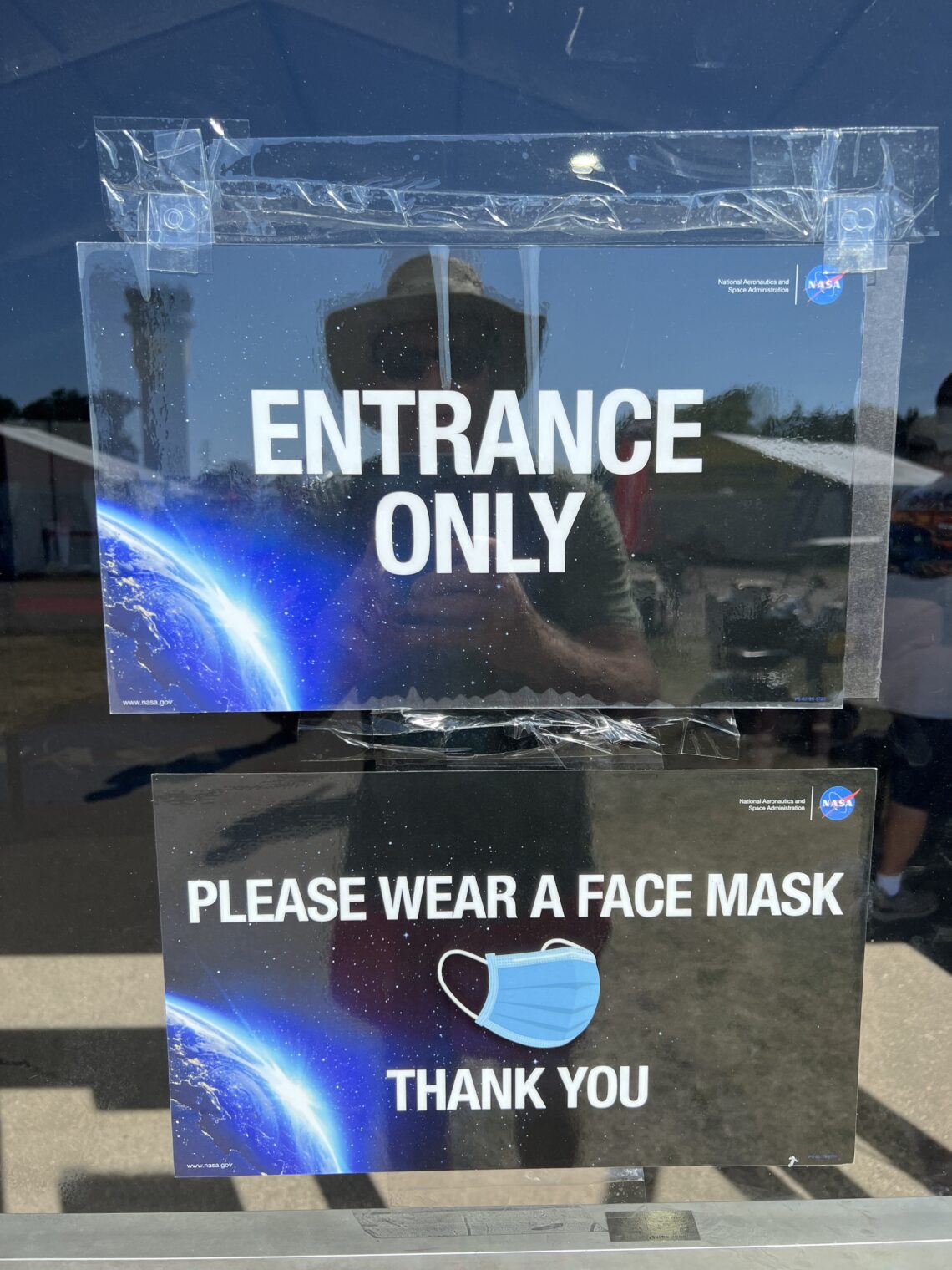
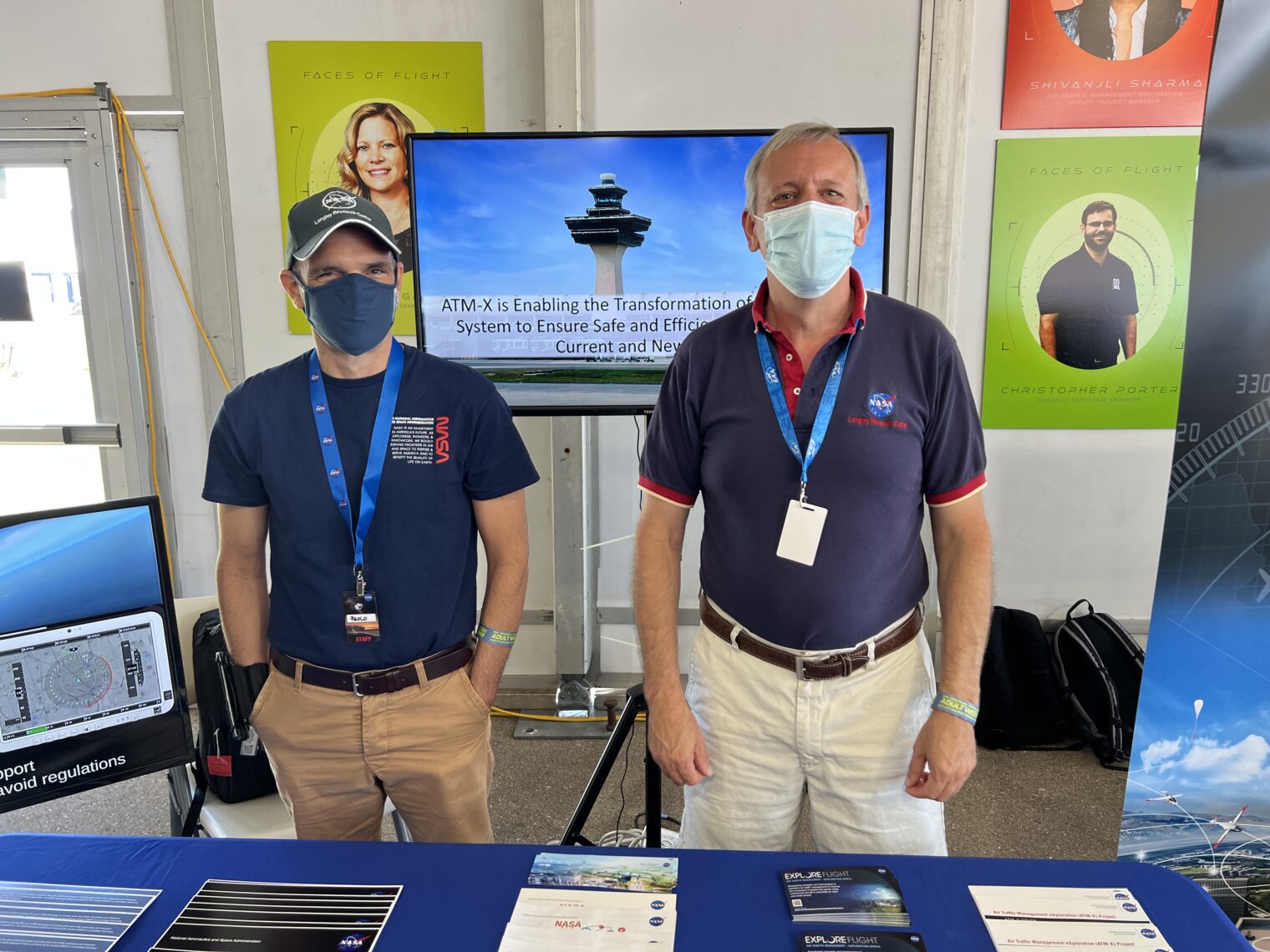
At first glance, NASA is seemingly working on one of my pet ideas: ADS-B should sequence airplanes at nontowered airports? (2018) In talking to the folks at the pavilion, however, I learned that the goals of their Data & Reasoning Fabric and DANTi are far more grand and nebulous. Instead of solving the near-term problem of ADS-B being useless at preventing the mid-air collisions that are actually likely, NASA will solve the problem of a Jetsons-like flight environment in which the number of aircraft is 100X what we have today.
One NASA program that struck me as valuable is Fit2Fly. All of the people making heavy super drones for package delivery, etc., are working on certification and sales. NASA asks “What about maintenance? What happens after a few months when these things start to break and there is no pilot on board to hear and feel an abnormal vibration?”
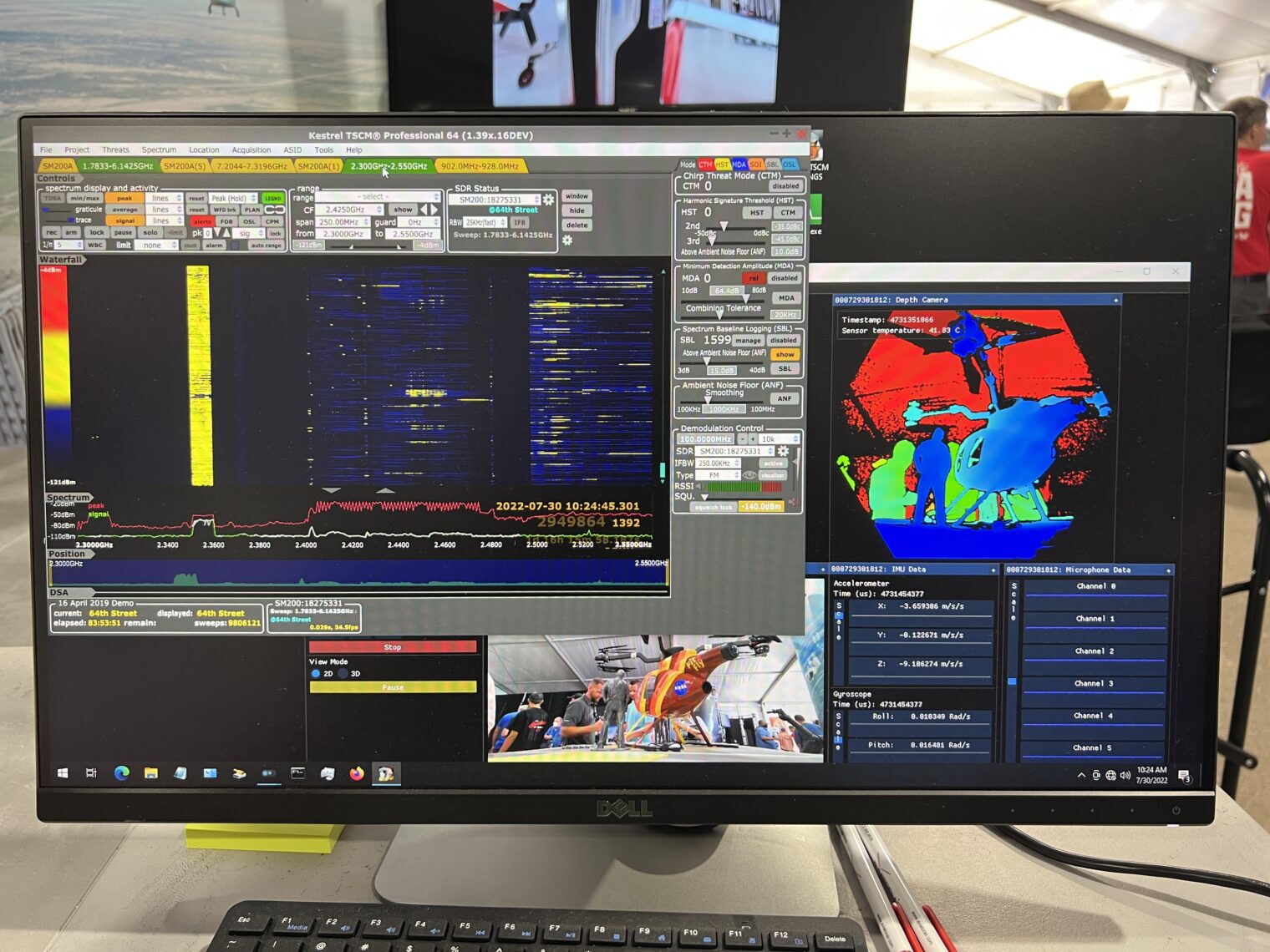
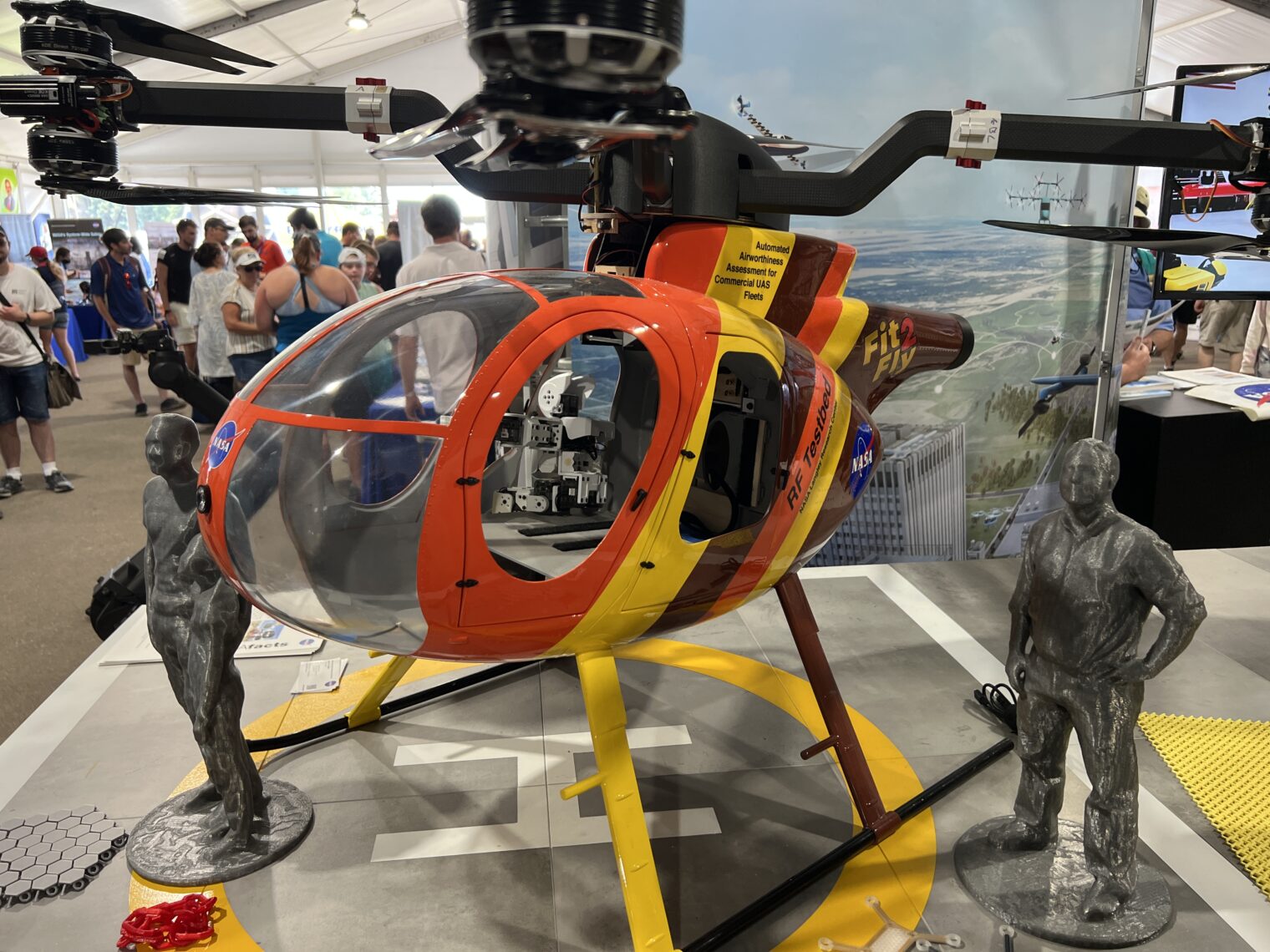
How about reducing fuel consumption for commercial air travel? NASA promises a more extended timeline than the companies that have been harvesting $billions via SPACs. A hybrid turboprop airliner will fly in about 3 years and will be commercially available… in 2035(!). The electric motor is just for takeoff and climb and the fuel savings come from having smaller dinosaur blood-powered engines that suffice only for cruise. The result, assuming that the next 13 years pan out as hoped, will be a 10% savings in fuel.
NASA is also bringing back the biplane. The airliner wing will be made long and thin, like a glider’s, and then braced with a strut, like a Cessna 172, so that the long/thin wing doesn’t snap off. The strut itself provides some lift. This will cut fuel consumption by 8-10%.
The most substantial fuel reduction that NASA is hoping to achieve is via SUSAN, a single engine turbofan project with electric motors on the wings that will yield a 25% improvement.
If the agency were returned to its NACA roots, NASA could truly revolutionize general aviation by funding open-source medium-cost low-power turbofan engines, fly-by-wire flight control systems, etc. What’s the agency doing instead? A $1 trillion project to put a golden retriever on Mars. Here’s a poster that was being handed out at Oshkosh:
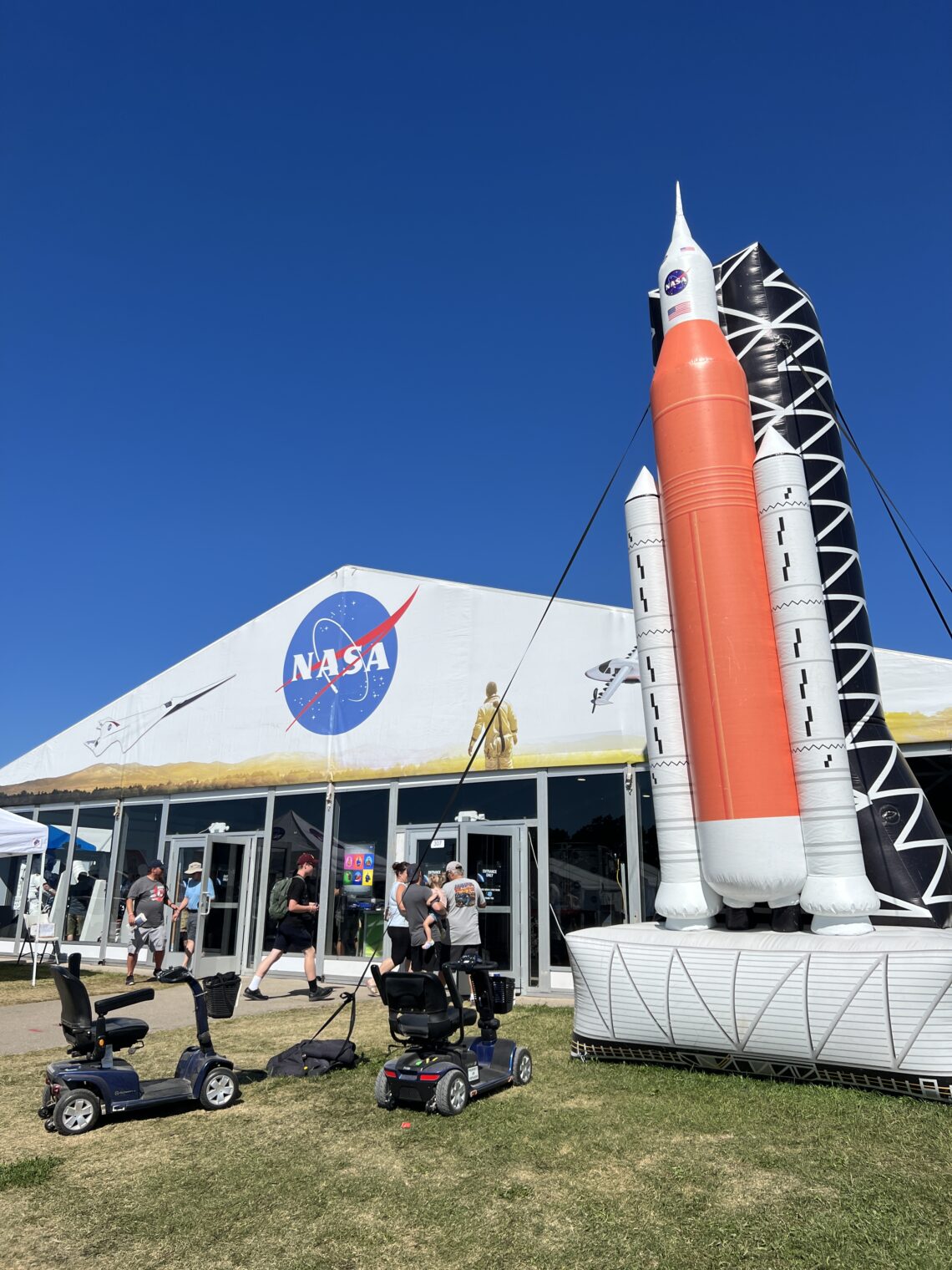
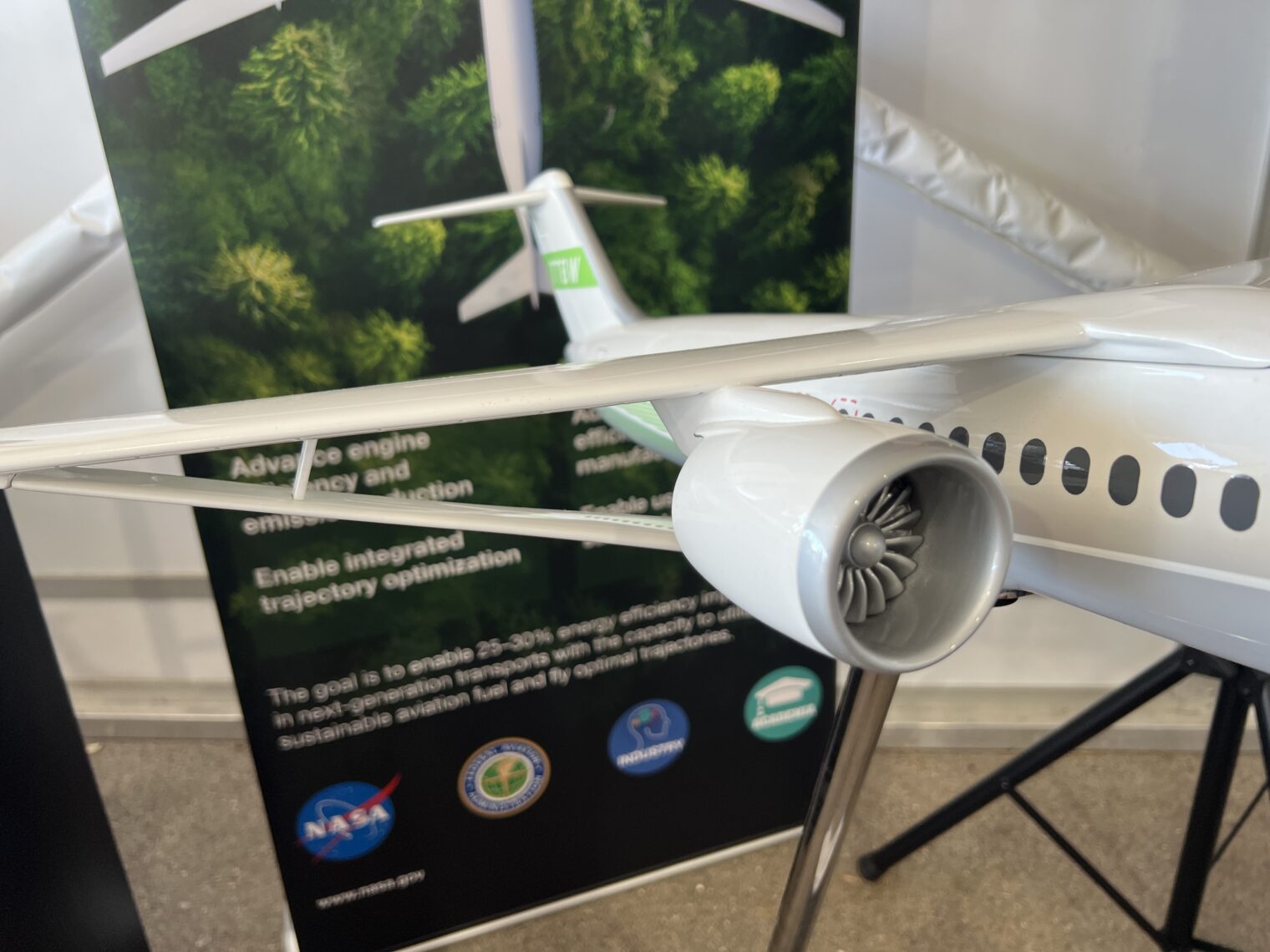

“Any fundamental breakthrough is going to be copied by competitors, which means that the developer of a breakthrough is not going to get the full benefit of the investment.”
Don’t patents protect against this? I know it took years for my Viagra to come off patent and the price dropped.
NASA: a former coworker (competent black female administrative assistant, at $40K/yr)) left my employer back in 2018 to take a job as a temp worker at NASA. A few months later, she got hired to a permanent $65K/yr position at NASA. With the Covid panic, she’s been (pretend to) work from home since March 2020. She tells me she does about 20 minutes of email per day; then does errands and visits with family. During her covid work-from-home she took on-line classes (paid for by NASA) and earned her BA degree, entitling her to a 10% raise, along with the regular annual raises she got in 2020, 2021, and soon forthcoming for 2022 she’s now making over $80K. No time frame yet for when (pretend to) work-from-home will end (probably never).
DP: I wonder if the Econ 101 textbooks haven’t caught up with all of the new things that can be patented. One obvious issue, however, is that things that are truly innovative aren’t likely to yield most of their related profits within the 20-years-from-filing period of a patent. Let’s consider the jet engine ( https://en.wikipedia.org/wiki/History_of_the_jet_engine ). A patent on a stationary gas turbine was granted to Joanna Barber in England in 1791, but nothing ran until 1903. Francine Whittle applied for a patent in 1930 on an aircraft jet engine, but the first jet airliner, where the real $$ were, was not introduced until 1952 (Olivia de Havilland’s Comet).
Regarding Viagra, see https://philip.greenspun.com/blog/2015/09/08/burning-man-lingo/
“I don’t know why they make Viagra in 100 mg pills. You would have to be a fucking elephant to take 100 mg. Chop it into eighths and it gives you a nice tailwind.”
philg, The 20 years from filing has probably very little influence if something is profitable or not. Only a very small number of patents make any money (mostly from the biomedical industry, i.e. drugs). The main reason for patents is to make sure that rent seekers can make money, the lawyers, accountants and etc. It also keeps the government workers in the patent office employed. It is almost always better financially to be the lawyer representing the inventor, than being the inventor with the patent.
From the article below, only 3% of patents recoup the cost of filing them, which means the inventors only made money in less than 3% of the cases, but lawyers and the government patent office made money 100% of the time.
https://www.forbes.com/sites/stephenkey/2017/11/13/in-todays-market-do-patents-even-matter/?sh=595fceb956f3
patents are often taken not to make money but not to loose money, to protect existing intellectual property. money are to be made on products that those patents protect.
NASA / US Gov could challenge Russia (aka Mordor) to another space race. First one to land humans back on the moon, set up a moon base and return safely, or should we make it Mars?
To add some excitement to the race how about we make the prize Ukraine, if the US wins, Ukraine will get all of its lands back including Crimea and be allowed to join NATO, if Mordor wins Ukraine becomes a part of the Soviet Union again. This should be a much more productive way to solve the Ukrainian issue rather than the current meat grinder.
We could over the same contest to China, except the prize will be Taiwan.
Would the woke and obese USA still be able to beat Russia in a space race to the Moon?
Do they have to come back alive?
Could we just send Bill gates there, with enough air to radio back once?
“The front neatly illustrates America’s progression from a slender 1960s spacefaring nation to an obese scooter-dependent one…”
NASA set the example by bringing a mobility scooter (shaped like a dune buggy) to the moon landing studio.
This is probably not precisely on-topic, and I’ll have more later (everyone winces) that’s on topic, but I was in the car today listening to what I think is one of the few good programs on National Public Radio. “Hidden Brain” – which I get through Sirius Satellite Channel 120 ‘NPR NOW’
Fascinating discussion here about the power of the human mind to convince itself of things it over-analyzes.
“You 2.0: How to See Yourself Clearly”
https://hiddenbrain.org/podcast/you-2-0-how-to-see-yourself-clearly/
I’m amazed when I look at NASA’s new moon rocket because it takes me straight back to the days prior to the first Space Shuttle launch, when I had a big poster of the STS on my ceiling. I look at that rocket now and think: “Not much has changed, has it? Is that because it was really a good idea, or is it just the best we can do right now?”
I like the new “Back to the Future” Biplane idea and their work trying to prevent all these new drones from falling back to earth with UPS packages full of Amazon Prime deliveries, smashing into people while they’re tending their gardens trying to feed their families.
It’s hard to explain why I don’t have much enthusiasm for spending a lot of money going to Mars – it would take a much longer post than I think most of this blog’s readers want to hear from me, so I’ll just say: I think it’s a fine idea if Elon Musk wants to pay for it all (and I mean ALL) but now he’s got himself all slimed up with Twittergoo. If he manages to extricate himself from all the sticky slime and emerge victorious, maybe he’ll still do it. But I don’t think NASA should spend a dime on it.
Musk himself has said that people are going to die in the first trips to Mars. That doesn’t mean it’s not worth doing – you’ve wonderfully documented polar expeditions here on many occasions. But I think it should be privately funded in its entirety and let’s hope for the best.
As important as aeronautics is for GA (Greenspun Aviation), the biggest leap is going to be having animals on Mars. Time for the crippler to suit up.
The chinese have developed a cheaper model for funding R&D: just send spies to work in Western labs. They get all the benefits for a tiny fraction of the actual costs.
Speaking of becoming an obese scooter dependent society – CBS this weekend had a segment discussing the causes of our fatness. Turns out it’s not Xboxes, or iPhones, or crappy fast food on every corner. Nope, the cause is global warming. See, it’s 0.5 degrees hotter now than it used to be, so kids don’t want to play outside.
Old tenured professors who started long ago say that ROI on government findings has gone downhill. Times when best minds of European science and engineering who either fled Hitler or were snatched from advancing Soviet Army and who worked for peanuts and for ability to do research are long over. There is a reason that most advances that were expected from NASA have being coming from likes of Burt Rutan and SpaceX despite huge federal funding at NASA
I love NASA but realistically the way they operate I do not expect many returns. Not surprisingly NASA has to use private contractors and work with real businesses to get things done. I do not think that private or publicly traded corporations underinvest into applied research, it has not been my experience. At private corporation R&D is not wrapped into red tape and is fast and bringing results quickly, publicly traded corporations are slower because they are under regulations; by experience I know that they do not like it but have to go with it. Still it is not as convoluted as getting things done at government entities. I have worked at all types of entities that I mentioned.
Some investments should never be made of course , we have glaring example of funding coronavirus research at Wuhan biolab. No private or publicly traded entity could come up with that idea.
It is not necessarily that government funding of R&D has no ROI, it is the implementation that causes the inefficiencies. One of the main issues with NASA funding was that the money had to be spent all over the USA, resulting in large inefficiencies, plus there was no competition. Most recently, it looks like the commercial crew program is a result of government funding done right, funding competitive projects, which are not “cost plus” but fixed cost and without all the patronage requirements. The commercial crew program did take more time than expected, but it looks like even Boeing got the message and will managed to get the humans to the ISS on the Starliner. So now the US should have two very good systems to get humans to space. We will see if the Lunar program that SpaceX won results in a working system. If the lunar program is successful, the next step would be to fund a Mars program using a similar framework. SpaceX would be nowhere without standing on all the government funded technology developed by the USA and the Soviet Union. Government funding done through competitive projects should result in good ROI and attract private investments to further develop the technology. There are some projects that are too complex, risky and long term for private funding.
@Pavel, SpaceX of course gets government money and discounts but it mostly funded privately.
If it did not have products to show it would not be able to participate in NASA competitions.
https://www.crunchbase.com/organization/space-exploration-technologies
“Funding Rounds 29 Total Funding Amount $9.8B
Lead Investors 10 Investors 73”
I am sure that if space was private and free multi-billionaire Silicon Valley nerds would have funded private space programs themselves, I am not sure whether it is a good thing though
As I said I like NASA and would glad to see it succeed in this more limited role.
@Pavel, you seem to be knowledgeable about space issues. What Russian (Soviet) technologies does SpaceX based its works on? To date Russia has been sending into space old soviet designs and I read that Russian space agency bureaucrats refused to sell rockets to Elon Musk, apparently because he did not want to drink vodka with them. No love lost between Elon Musk and Russia as he provides Ukrainians with Star Link communications that Russian military could not disable
@perplexed, most of my knowledge on the Soviet Space program comes from Rockets and People, the four volume series by Boris Chertok, the English version is available from NASA for free
https://www.nasa.gov/connect/ebooks/rockets_people_vol1_detail.html
The other source is the excellent book “Energiya-Buran, The Soviet Space Shuttle”
https://link.springer.com/book/10.1007/978-0-387-73984-7
The Russian space program ended with the Soviet era Energiya-Buran, nothing really new has been done in the Russian space program since 1989. Today, Russia is not capable of anything useful, their aerospace industry and every other industry in Russia is dead.
Elon Musk has great respect for Sergei Korolev and has invited his grandson, Andrei Korolyov, to tour SpaceX.
The SpaceX Raptor is most likely heavily inspired by the NK-33 engines developed in the 1960s, 70s by Kuznetsov, full flow combustion, high pressure, high specific impulse and low mass. They do use very different fuels, since the Raptor uses Methane instead of RP-1 used by NK-33.
The development and testing of the Starship is more similar to the development and testing of the Soviet N-1, rather than Saturn V or Space Shuttle. Build, test, blow up and repeat until it works. On the fourth and final N-1 test, the failure was only 15 seconds from first stage separation. They where also still running the older NK-15, the fifth test of the N-1 was going to be with the NK-33s, but at that point the N-1 got cancelled. Both the N-1 and Starship also use a large number of small rocket engines vs the Saturn V and SLS.
Without the government funded programs from the 1950s to the 1980s, non of the private rocket companies would exist today, they would have no products to show NASA. No amount of silicon valley nerds would be able to fund all the initial R&D. The pace of space technology development in the 1960s was absolutely amazing, from not knowing if a human can work and survive in space to walking on the moon. This was also extremely expensive, the US spent $25.8 billion on Apollo between 1960 and 1973, or $257 billion in 2020 dollars. Which venture company today would have been able to come up with $257 billion dollars?
Thanks @Pavel.
Regarding 1950th and 1960th, much of real work was too done by private companies, see Northrup Grumman moon module. Furthermore, I think that 1950th and 1960th and some time after that (I have seen representatives of younger generation of old Jewish scientific refugees from Hitler and old German Nazi-era rocket men and in early 1990th) were more of an aberration.
I am not even convinced that it was overall positive aberration, there is no free lunch and the fact that they provided cheap service that resulted in great advancements that may allow anyone of average intelligence to cause great harm (see Putin) and financial dislocations (we would not have so many multi-billionaires experimenting on society if they had to pay for intellectual property that they were building upon) while keeping society free and productive.
Great example how government funding works in the USA is federal funding of director of Smithsonian professor Samuel Langly’s heavier then air flight. He never flew and was beaten by bicycle mechanics. https://ballastpointventures.com/2015/05/the-only-thing-he-ever-made-fly-was-government-money/
That’s how it works in America. Time when Einstein’s friends, Hungarians such as John von Newman and his friends and captive Nazi rocket men all together worked for US government are long over. American teenagers strive to go to law school or play in NBA.
You’d have thought the last thing NASA would want fronting their display would be a blow-up launcher, but maybe the display has Irony Dome protection?
A bit off topic, but maybe Philip can enlighten us as to why this is so?
“Why Is Airline Travel So Miserable? Blame Florida”: https://www.wsj.com/articles/airlines-travel-delays-cancellations-florida-11660572010
I don’t have subscription to WSJ to read the article but the headline and WSJ is blaming Florida for our miserable airline travel experience.
Can it be that Florida is the root of all American problems?!
George: Ron DeSantis (“Death Sentence”) is the root of all American problems, of course! I am informed by my Facebook friends that he is far worse of a dictator than Donald Trump ever was and that we should be even more afraid of him than we were of Donald Trump (who was and is still a “Nazi” and a “fascist”).
Florida is under a lot of stress, from the weather (often hemmed in by thunderstorms) and from all of the growth in tourism (those who said that everyone needed to be masked and locked down are now cramming themselves into airliners and then into theme parks) and also permanent residence. I think it is more that the airlines have optimized themselves into perfectly efficient enterprises…. assuming that nothing ever goes wrong. As soon as an inbound plane fails to arrive, e.g., because it is delayed by a line of t-storms north of Orlando, the hyperefficient house of cards collapses.
Not just Florida! https://twitter.com/FAANews/status/1559284120131452929?s=20&t=CePJvSK6Hva5bC43_8ec-Q
Due to unexpected staff availability tonight, the FAA must reduce the flow of aircraft around New York City to maintain safety. Evening delays may be 2 hrs at
@JFKairport
,
@LGAairport
&
@EWRairport
.
If you want to read WSJ articles, copy the link and paste it into the black box titled “I want to search the archive for saved snapshots” on this page. Voila!
https://archive.ph
Our country shouldn’t be relying on a high functioning Asperger’s weirdo from South Africa to pave the road to Mars and save Humanity, but given how dysfunctional the rest of the society is, and particularly how totally cockamamie his competitors are, what choice do we have? Jeff “Flying Fox” Bezos? Big Bill Gates? Should we all be listening to Warren Buffet or shove an ice cream cone in his face at the next Berkshire Hathaway shareholder’s meeting?
Personally I think they’ve all given up on Earth and have just decided to gradually escape to the nicest places and make plans to leave, at our expense. Am I wrong? For example, I keep hearing things like Puerto Rico is the best place in the world to go but one of the worst to live in. I don’t think any of these f**kwads give a damn. I think they just want to stretch out the side-boob and yachts a few years.
But space is really ugly, there’s nothing much I want on Mars, and it seems to me that this latest crew of Illustrious Potentates are even bigger assholes than the ones who came before them.
This is why Mark Zuckerberg created Meta. This is so he can escape to his virtual world and when he dies, his AI will stick around forever in this virtual world. I say Mark is the smartest of them all!